

Creating an inclusive classroom: How best to ensure that all students progress and thrive – The Early Career Hub. This website uses cookies We use cookies to provide a good service to you and to improve the use of our website.
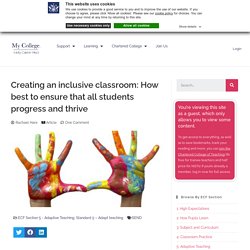
If you choose to agree, please click 'Allow all cookies'. Please see our cookie policy for choices. You can change your mind at any time by returning to this site. Necessary (19)Preferences (3)Statistics (6)Marketing (14)Unclassified (19) Necessary cookies help make a website usable by enabling basic functions like page navigation and access to secure areas of the website. Preference cookies enable a website to remember information that changes the way the website behaves or looks, like your preferred language or the region that you are in. Prescient Education. Why consistency in parenting is vital, especially for children with challenging behaviours - Special Needs Jungle. We have adopted a cat, or rather he has adopted us.
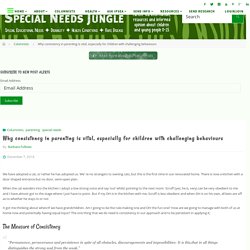
We' re no strangers to owning cats, but this is the first time in our renovated home. There is now a kitchen with a door shaped entrance but no door, semi-open plan. When the cat wanders into the kitchen I adopt a low strong voice and say ‘out’ whilst pointing to the next room. MINDFULNESS FOR CHILDREN. “As one of the very first to bring secular mindfulness into public schools, Annaka Harris is uniquely qualified to teach meditation to children in a simple, direct, and authentic way.
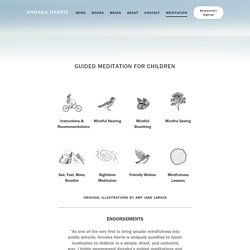
I highly recommend Annaka’s guided meditations and lessons for children.” —Susan Kaiser Greenland, author of Mindful Games and The Mindful Child “These are my favorite guided meditations for kids!” —Rivers Cuomo, musician and lead singer / songwriter of the band Weezer. Family Stories and Experiences of the EHCP Process. DfE loses landmark legal challenge on exclusions. Checklist for school aged child referral (2) Behaviour as a form of communication: What's the issue? There's been quite a lot of discussion in the Twittersphere, on and off in recent months about the notion that "(all) behaviour is a form of communication".

I've bracketed the word "all" here quite deliberately, as I think it is part of the problem, and will come back to that later. I'll state my position up-front here, as someone who has spent the last two decades researching young people in the youth justice, out-of-home care, and education systems (both mainstream and flexible/alternative settings): NASEN SEND GATEWAY. Making Your Classroom Autism Friendly. How to create the best school website SEN page - Schudio. Day to day, your school website is about three key audiences; parents/students, prospective parents/students and Ofsted inspectors.

Ok, that last one is less day to day but they're always there, lurking in the shadows! There are lots of nuances within those groups. For example, the needs of a primary school audience differ from that of a high school. There's also different groups within those.
How to support a learner with dyslexia. Finding the right way to support a child with dyslexia can be challenging.
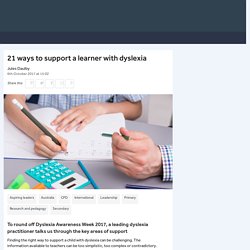
The information available to teachers can be too simplistic, too complex or contradictory. So to end Dyslexia Awareness Week on a positive note, I have put together a list of things that we at the Driver Youth Trust believe constitutes good practice. Shape Coding by Susan Ebbels ® Click here to view a short video about Shape Coding by Susan Ebbels® Click here for slides used in the video Please note that we are currently the only providers of accredited Shape Coding resources.
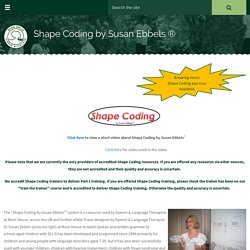
If you are offered any resources via other sources, they are not accredited and their quality and accuracy is uncertain. SEND Review. How strategic SEND can help you and your setting Discover links to research, providers and provision, to support you and your school to improve practice, all linked to the 8 focus areas of the SEND Review developed by the London Leadership Strategy in a DfE funded project.

There are also examples of effective practice which have been shared by schools and other education settings.* You may think that what you do is ‘too simple’ to share, or that ‘surely everyone else has already thought of it’, but consider how other professionals may benefit from your experiences, both positive and negative. *nasen does not approve or endorse any of the school examples of practice that are published on the SEND Gateway What is the SEND Review? Home - IPSEA. ACE Education Advice CIC & ACE Education Training LLP. The inner workings of the dyslexic brain. Now there is this broad consensus that the most common reason for reading difficulties actually has to do with the processing of spoken language.

Some children process spoken language in a way that makes it hard for them to grasp what is called phonological awareness, a skill that allows one to consciously or explicitly understand that a word is made of multiple sounds. Children need to understand the multiple sounds within a word in order to map those sounds onto print and to relate them to the words they know. MK: Does this phonological awareness deficit translate to a noticeable difference in brain structure or function? JG: In terms of the brain, there’s quite a bit of convergent evidence that at least two areas essential for reading function differently and disadvantageously in children who are poor readers.
The two spots are both located in the left hemisphere, which is the language hemisphere and becomes dominant for reading with experience. DfE SEN Support Survey Report. Horror stories: Recent SEND research for your summer reading - Special Needs Jungle. Dear reader, I am sorry, but I have failed you.

DfE SEN Support Survey Report. Co-regulation in Autism: synchronising emotions, intentions and thoughts - Special Needs Jungle. In a previous post in my series on co-regulation in autism, we looked here at what it is and how important it is to establish co-regulatory roles when working with people on the spectrum. This enables us to facilitate experience-sharing, emotion-sharing and to promote reciprocal enjoyment and competence.
The ability to co-regulate is one of the earliest developmental milestones. Co-regulation happens between two people when the action of person A is contingent on, but not controlled by the action of person B and vice versa. It is a communicative dance in which we co-ordinate our feelings, thoughts and intentions, often by way of non-verbal as well as verbal communication. The ‘Still Face Experiment’ The ‘Still Face experiment’ by Edward Tronick is an excellent example of what happens with typical infants when co-regulation breaks down. The Mum then turns away from the baby and when she turns back, she is non-responsive. Co-regulating actions as well as ‘conversation’ Zoe Thompson Like this:
'Are you a real teacher?': Five things not to ask special needs educators. For parents of a child with special educational needs, it is often their greatest wish to do activities enjoyed by other families: going shopping without their child having a meltdown because they want all the toys in the shop, having a meal in a restaurant without their child screaming if the food takes too long to arrive or they can’t cope with the choice. I have taught children with special educational needs and disabilities (Send) for 16 years. My training taught me strategies to help children cope with these situations. I learned to help children on the autistic spectrum, children with ADHD and those with complex medical difficulties. I am trained to differentiate the curriculum so that children with different abilities can be taught together – as is their entitlement.
Tailor Made for Talking. Www.john-paul.org.uk. Priory Woods School and Arts College - Resources.